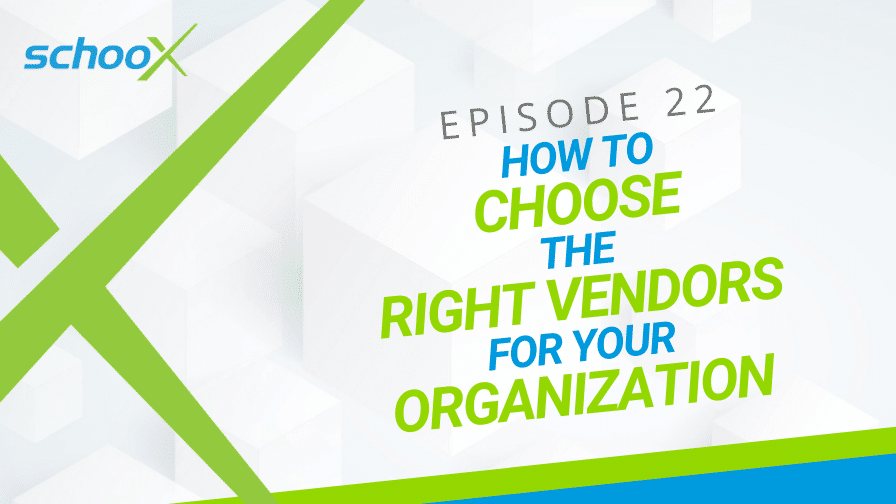March 15, 2021
7 Min. Read

One of the most difficult decisions a business can make is choosing a vendor.
When we say vendor, we mean any person or group outside of your organization that has been tasked to deliver a product or service to you. For example, a payroll software provider or a manufacturer would be a vendor.
Choosing the right vendor is not just about getting the right products, tools, or services. If you will be working closely with them, it’s important to choose very carefully.
Do you already have any vendors that are always awkward or painful to work with? Are there any you dread working with? It’s okay if you do. Many of us do. On the flip side of that, do you also have vendors that are a joy to work with?
Think about it. Examine the reasons why these interactions are so different. It’s not just about the service they provide (although that can be a big factor.) It’s also about how easy they are to work with.
That’s what Matthew Brown discusses in this episode of The Learning Xchange podcast. Matthew (Schoox’s VP of Learning and Brand Success) shares his advice for choosing a vendor that can become a true partner of your organization.
Listen to the podcast below or keep reading.
How do you choose a vendor that meets your needs?
When choosing vendors or partners to work with, the first step is to establish what you need. For example, it could be product design, an accounting system, a learning solution, or consulting services.
When shopping around for vendors, look at the features, offerings, functionality, and capabilities on offer. The first step is to make sure that, technically speaking, the vendor is a match and ticks all the boxes.
To do this, you can send out a Request for Proposal (RFP) to vendors. An RFP lets you collect offers from various vendors to ensure they meet all your criteria.
However, some businesses rely on using a generic RFP template. It’s not bad to use a template, but you really need to tailor it to your needs. Not tailoring your RFP means you could end up with a product or service that doesn’t quite tick all the boxes.
No two businesses are the same. We all have different needs, experiences, and perspectives. Using a template to drive your entire project is going to result in missing the mark.
If you still want to use a template, that’s fine, but look at it as more of an idea-starter. Use it as a foundation to build your processes and documentation.
When writing your RFP, think about the goals and strategies of your organization. Look at where you were last year versus now and build your requirements around that.
How does the vendor fit with your organization?
Checking the features and services a vendor provides is the easy part. You could end up with a service that does everything right and yet still run into issues.
That’s why it’s important to dig deeper and look at the vendor closely. This is something that people don’t do often enough!
When weighing up different vendors, ask yourself: is this vendor aligned with my own company culture, values, and goals?
Look at it as a hiring decision. When businesses hire people, they check that they are a good fit who aligns with the business’ core values.
We avoid bringing in people who don’t have the skills or aren’t a good fit because it doesn’t set anyone up for success. Interestingly, we don’t do the same when choosing vendors.
Vendors, while separate from your business, are still a key part of your organization.
When weighing up vendors, ask yourself one question: is this merely a vendor, or could they become more of a partner? Is this a company you simply purchase from, or one that works so well with you that they’re almost a business partner?
That’s what you want from a vendor, someone who acts as a partner.
The difference between ordinary vendors and partners
The difference between vendors and partners is that partners align with your organization.
They aren’t just a good fit. They’re a fit for your company culture and values. They understand who you are and what you do. Essentially, they become an extension of your team in a way that feels seamless.
The best way to check this is to analyze the sales or sign-up process. You can tell a lot from the communication style of a vendor during this process.
If you notice any friction or something that doesn’t feel right, don’t ignore it. By ignoring it, you run the risk of bringing in the wrong people and products for your business. This can lead to a great deal of disruption and friction that you really don’t need.
What do the employees of the company say?
Checking that the vendor’s values are aligned with yours is more than most people do. But if you want to go even further, another exercise you can do is check what the employees say about the company.
How the employees feel will tell you a lot about what they’ll be like to work with. Spend some time looking through the likes of Glassdoor to get a sense of how the employees feel.
Are they happy? Do they have common complaints about working environments or management?
These employees could be the very people you end up communicating with. If many of them are disengaged, unhappy, and unmotivated, this will reflect in the service and communication. If the workplace is a toxic culture, think about how this could affect your working relationship.
It pays to pay attention to the details. If you are choosing an important product or piece of software that will affect your business’ day-to-day life, it’s not a decision to take lightly!



